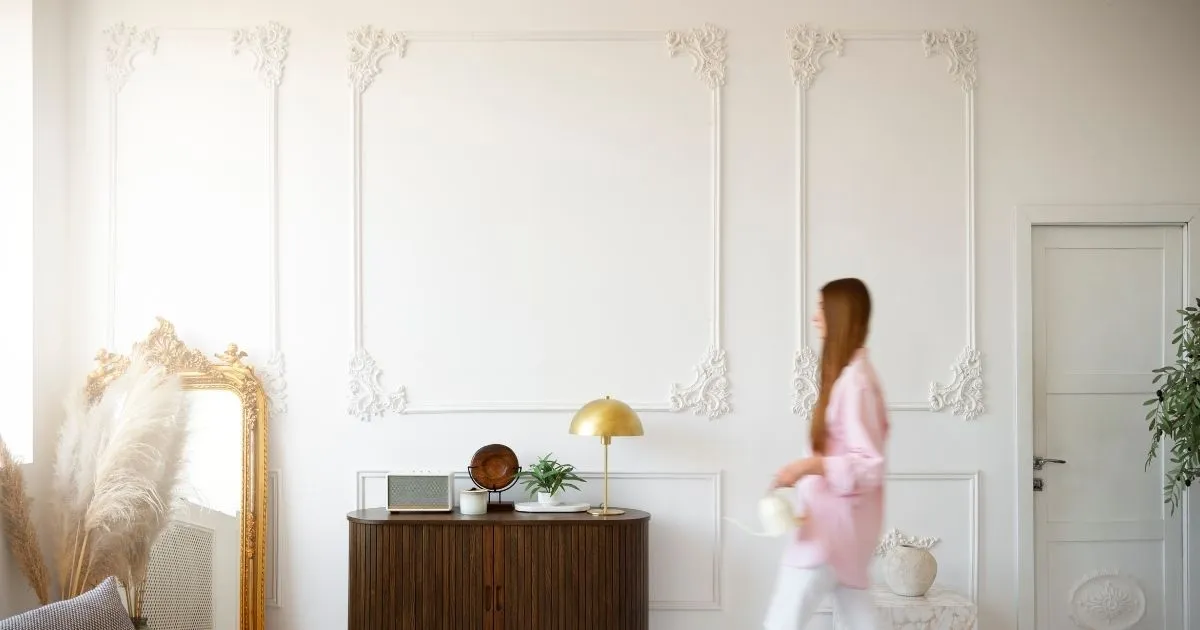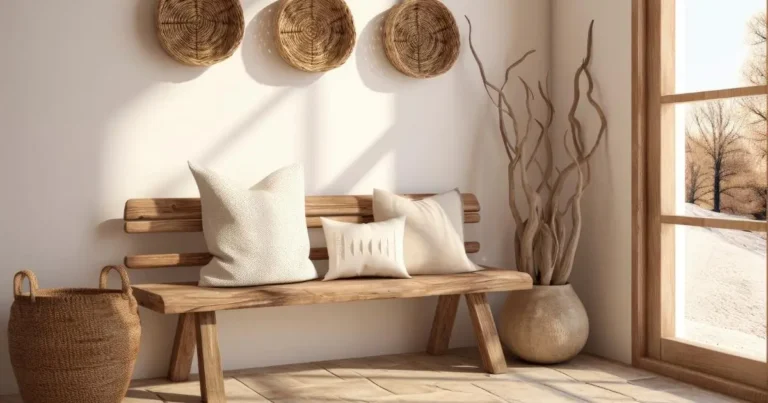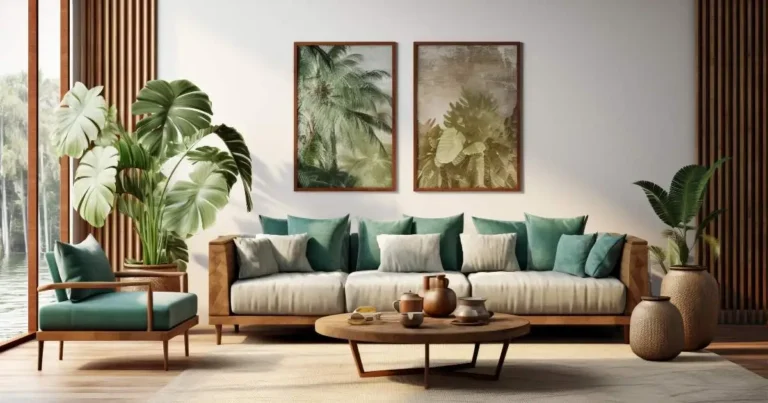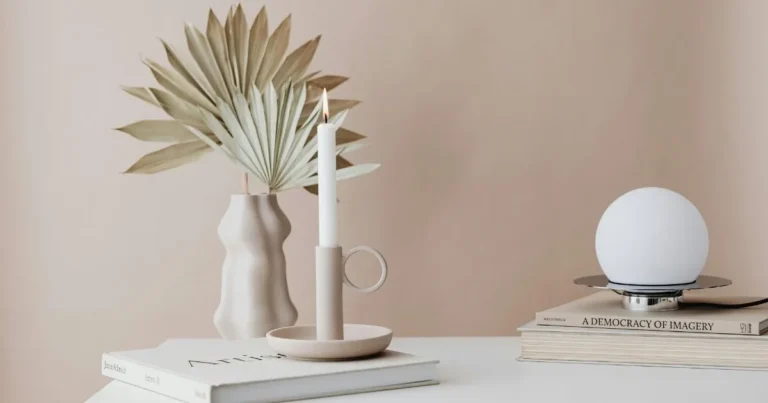Decorative Trim: Add Beautiful, Uplifting Details to Transform Your Home’s Look
Homeowners often use decorative trim to make their homes look better. There are many trim styles to pick from. This lets people find the right decorative moulding for their space.

Whether you want a traditional or a modern look, decorative trim can help. It makes any room look more stylish and sophisticated.
Key Takeaways
- Decorative trim enhances home style and aesthetic appeal.
- Various trim styles are available to suit different decor.
- Decorative moulding can add a classic or modern touch.
- It is a crucial element in home design and decor.
- Homeowners can choose from a range of decorative trim options.
The Transformative Power of Trim in Home Design
Trim is more than just a decorative element in home design. It’s a key feature that can change the look of a space. Trim defines the architectural style and adds visual interest, making a space look cohesive and polished.
How Trim Defines Architectural Character
Elements like mouldings, cornices, and baseboards are crucial in a home’s style. They show the homeowner’s taste and style, giving a room its unique look.
Visual Impact of Trim Elements
Trim elements can greatly enhance a room’s look. For example, a crown moulding adds sophistication, while a simple baseboard gives a clean finish.
Creating Depth and Dimension
Using different trim types can add depth and dimension to a space. This can be done by layering or using various profiles to add complexity.
The Historical Significance of Trim
Trim has always been important in architecture. From ancient Greek and Roman mouldings to today’s minimalist styles, trim has changed a lot over time.
Evolution of Trim Styles Through the Centuries
Trim styles have changed a lot over the centuries. This change was influenced by culture, society, and economy. Knowing this history helps homeowners pick the right trim for their home.
Regional Variations in Trim Design
Every region has its own unique trim designs. These designs are shaped by local materials, climate, and culture. Understanding these variations helps homeowners choose the right trim for their home’s location.
Essential Types of Decorative Trim for Interior Spaces
The right decorative trim can change your interior spaces, adding character and style. Decorative trim is a key part of home design. It comes in many styles and uses, fitting different tastes and architectural styles.
Crown Moulding and Ceiling Treatments
Crown moulding is a classic trim that adds elegance to rooms. It has various profiles, from simple to detailed designs.
Standard vs. Layered Crown Profiles
Standard crown profiles give a timeless look. Layered profiles add depth and complexity. The choice depends on the room’s style and the desired look.
Ceiling Medallions and Coffers
Ceiling medallions and coffers enhance crown moulding. They add interest to ceilings, making the look cohesive.
Baseboards and Chair Rails
Baseboards and chair rails are key parts of interior trim. They protect walls and add beauty.
Proportional Guidelines for Baseboard Height
Baseboard height should match the room’s size. Taller baseboards work well in large rooms. Smaller rooms look better with shorter baseboards.
Placement Strategies for Chair Rails
Chair rails are usually placed one-third up the wall. This creates a nice division between the wall’s upper and lower parts.
Wainscoting and Panel Moulding
Wainscoting and panel moulding add texture and interest to walls. They work in many room types, from traditional to modern.
Traditional vs. Modern Panel Designs
Traditional panels have raised or recessed designs. Modern panels use flat panels or geometric patterns. The choice depends on the desired look.
Application in Different Room Types
Wainscoting and panel moulding fit in various rooms, like dining rooms, hallways, and bathrooms. They bring sophistication and elegance.
| Type of Trim | Common Applications | Design Variations |
|---|---|---|
| Crown Moulding | Living rooms, dining rooms | Simple, layered, ornate |
| Baseboards | All rooms | Standard, tall, decorative |
| Chair Rails | Dining rooms, hallways | Plain, decorative, tiered |
| Wainscoting | Dining rooms, bathrooms | Traditional, modern, raised panel |
Exterior Decorative Trim Options
Exterior decorative trim is more than just a finishing touch. It’s a statement piece that boosts your home’s curb appeal. By picking the right trim, homeowners can make their home’s exterior more inviting and visually appealing.
Fascia, Soffit, and Frieze Boards
Fascia, soffit, and frieze boards are key parts of a home’s exterior trim. They add beauty and serve important functions like protecting roof edges and providing ventilation.
Functional Benefits Beyond Aesthetics
The fascia board covers the ends of the rafters. The soffit helps ventilate the attic. Together, they prevent moisture buildup and protect the roof structure from damage.
Weather Considerations for Exterior Trim
When picking exterior trim materials, think about the local weather. Choose materials that resist rot, moisture, and extreme temperatures for exterior use.

Window and Door Casings
Window and door casings are vital for exterior decorative trim. They frame windows and doors, creating a smooth transition between siding and frames.
Enhancing Curb Appeal with Detailed Casings
Detailed casings can greatly improve a home’s curb appeal. They add elegance and sophistication. There are many styles and materials to match your home’s architectural style.
Complementing Architectural Style
The casings’ style should match the home’s design. For example, a modern home might look good with sleek casings. A traditional home could benefit from ornate details.
Decorative Corbels and Brackets
Decorative corbels and brackets add beauty to a home’s exterior. They’re often used under eaves, porches, or other structural elements. They can be made from wood, metal, or composite materials.
Structural vs. Purely Decorative Applications
Some corbels and brackets are structural, while others are decorative. Knowing their purpose helps choose the right material and design.
Material Options for Longevity
The material for corbels and brackets depends on durability and maintenance needs. Composite materials, for example, resist weathering and need less upkeep than wood.
| Exterior Trim Component | Functional Benefits | Material Options |
|---|---|---|
| Fascia Boards | Protects roof edges, supports gutter system | Wood, Vinyl, Aluminum |
| Soffit | Provides ventilation to attic space | Vinyl, Aluminum, Wood |
| Window and Door Casings | Frames windows and doors, adds decorative element | Wood, Composite, PVC |
Selecting the Right Decorative Trim Style for Your Home
Choosing decorative trim is key to changing a room’s feel. There are many styles to pick from. You can find trim that matches your home’s look and shows off your style.
Traditional vs. Contemporary Trim Profiles
Decorative trim comes in two main styles: traditional and contemporary. Traditional trim has detailed designs, perfect for old homes. Contemporary trim is simple and fits modern homes well.
Ornate vs. Minimalist Approaches
Traditional trim has fancy details like carvings. Minimalist trim is simple, with clean lines for a modern look.
Mixing Styles for Transitional Spaces
For homes with different styles, mixing trim can make a space unique. Combining traditional and modern elements creates a stylish, adaptable look.
Matching Trim to Your Home’s Architecture
Your home’s style affects the best trim choice. Each style has its own trim that can make your home look better.
Colonial, Victorian, and Craftsman Trim Characteristics
Colonial homes have simple trim. Victorian homes have fancy details. Craftsman homes have strong, handmade trim.
| Architectural Style | Trim Characteristics |
|---|---|
| Colonial | Simple, classic profiles |
| Victorian | Intricate, ornate details |
| Craftsman | Sturdy, handcrafted trim |
Modern and Mid-Century Trim Applications
Modern homes use simple, functional trim. Mid-Century Modern homes mix simple and organic profiles, blending with nature.
Creating Cohesion Throughout Your Space
Designing a cohesive home is more than picking trim. It’s about keeping the design consistent.
Consistent Scale and Proportion
Choosing trim that matches the room’s size is important. It keeps the design smooth and balanced.
Transitioning Between Rooms
When moving from one room to another, think about the trim. Using the same style helps the transition feel smooth.

Materials and Finishes for Decorative Trim
Choosing the right material and finish for decorative trim can really make a room pop. Homeowners have many options, each with its own pluses and minuses.
Wood, MDF, and Composite Options
Wood is a favorite for decorative trim because it’s both beautiful and strong. But, it can be pricey and sometimes warps or cracks.
Hardwood vs. Softwood Considerations
Hardwoods like oak and maple are tougher than softwoods like pine. Hardwoods cost more but look more luxurious.
Budget-Friendly Alternatives
MDF (medium-density fiberboard) is a cheaper option than solid wood. It’s made from wood fibers and resin, making it smooth for painting.
Painted vs. Stained Finishes
The finish of decorative trim greatly affects its look. Painted finishes give a clean, even look. Stained finishes show off the wood’s natural beauty.
Color Selection Strategies
When picking a color for painted trim, think about the room’s color scheme. For stained finishes, pick a stain that matches the wood’s natural color.
Preparation and Application Techniques
Getting the surface ready is crucial for a great finish. Make sure it’s clean and sanded before painting or staining.
Weatherproof Materials for Exterior Applications
For outdoor trim, you need weatherproof materials. PVC and cellular composites are good choices because they resist rot, warp, and bugs.
PVC and Cellular Composites
PVC trim is tough and easy to care for. Cellular composites look like wood but are more durable.
Maintenance Requirements by Material
- Wood trim needs regular painting or staining.
- PVC and composite trim are easy to keep up, needing only occasional cleaning.
By picking the right material and finish for decorative trim, homeowners can boost their home’s style and longevity.
DIY Installation Tips for Decorative Trim Projects
DIY decorative trim installation can be rewarding. It can make your home look better. You need to plan and prepare, but it’s worth it.
Essential Tools and Materials
Before you start, gather the right tools and materials. This list includes:
Measuring and Cutting Equipment
Getting accurate measurements is crucial. Use a tape measure and a miter saw for precise cuts.
Adhesives and Fasteners
Choose the right adhesives and fasteners for your trim. Wood trim might need nails, while MDF might use nails and adhesive.
| Tool/Material | Description | Use Case |
|---|---|---|
| Tape Measure | For measuring rooms and trim pieces | Ensuring accurate cuts |
| Miter Saw | For making precise angled cuts | Corners and joints |
| Nails/Adhesive | For securing trim to walls and ceilings | General trim installation |
Step-by-Step Installation Process
Preparation and Layout
Clear your workspace and protect floors and furniture. Lay out your trim pieces as measured.
Securing and Finishing Techniques
Use chosen fasteners to secure your trim. Make sure it’s level and aligned. Finish by caulking gaps and painting or staining to match your decor.
Common Mistakes to Avoid
Measurement and Cutting Errors
Double-check your measurements and use a miter saw for precise cuts. This avoids errors.
Finishing and Caulking Issues
Make sure gaps are caulked well and the finish is even. This will improve your trim’s look.
By following these tips, homeowners can successfully install decorative trim. This can enhance their home’s look and value.
Conclusion: Enhancing Your Home’s Value with Quality Trim
Decorative trim is a smart choice to boost your home’s style and value. By picking the right styles and finishes, you can show off your personal taste. This makes your home look beautiful and lasting.
Quality trim can change how your home looks inside and out. It adds depth and character to any room or the outside of your home. Whether it’s crown moulding, baseboards, or fascia boards, the right trim makes a big difference.
When choosing trim, think about your home’s style and architecture. Also, pick materials and finishes that go well with them. There are many trim styles and finishes out there. This makes it easy to find the perfect one to make your home look better and more valuable.
Adding decorative trim to your home design makes it look cohesive and polished. It impresses family, friends, and even potential buyers.
FAQ
What is decorative trim, and how can it enhance my home’s style?
Decorative trim adds elegance and sophistication to a room. It frames doors and windows, covers joints, and ties a space together. This enhances your home’s style.
What are the different types of decorative trim available for interior spaces?
Decorative trim includes crown moulding, baseboards, chair rails, wainscoting, and panel moulding. Each type has its purpose and can make your interior stylish.
How do I choose the right decorative trim style for my home?
Choose trim based on your home’s style, the room’s use, and your taste. You can pick traditional, modern, or mix styles for a unique look.
What materials are commonly used for decorative trim, and what are their benefits?
Wood, MDF, and composite materials are common for trim. Wood gives a natural look, MDF is affordable, and composite is durable for outdoors.
Can I install decorative trim myself, or should I hire a professional?
You can try installing trim yourself, but hiring a pro is safer if you’re new to it. A pro ensures it’s done right.
How do I maintain and care for my decorative trim to ensure its longevity?
Check your trim for damage, dust, and dirt often. Clean it with a soft cloth and mild soap. Paint or stain damaged spots as needed.
What are some popular trim finishes, and how do I choose the right one?
Popular finishes are painted, stained, and natural. Choose based on the room’s color, the trim’s material, and your taste. Paint for contrast, stain for beauty.
Can decorative trim be used in exterior applications, and what considerations should I keep in mind?
Yes, trim can be used outside for fascia, soffit, and more. Pick durable, weather-resistant materials that are easy to maintain.







